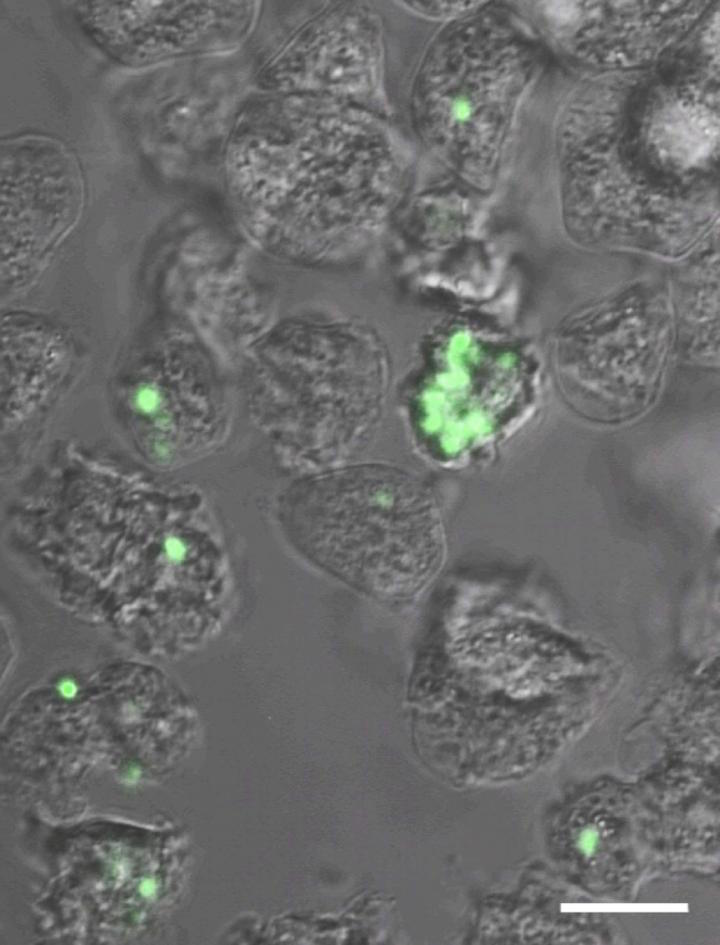Amoebae Give Black Death Bacteria a Safe Place to Hide

The simple amoeba — a single-celled organism found in the water and soil — may provide a safe haven for the deadly bacteria that cause the plague, a new study finds.
Plague bacteria (Yersinia pestis) can use amoebae as a type of safe house where the bacteria can thrive and replicate, the researchers found. This finding may explain how plague can remain dormant for years before unexpectedly re-emerging, the researchers said.
"The bacteria were not just hanging out, but they were surviving and actually quite happy inside the amoebae, and replicating," study lead researcher David Markman, a graduate student of biology at Colorado State University, said in a statement. "By contrast, most bacteria get digested by amoebae and are decimated in under an hour." [Pictures of a Killer: A Plague Gallery]
Plague is most famous for causing the Black Death that killed millions of people in the 14th century. The bacteria are still around today and every year infect more than 2,000 people worldwide, including an average of seven people in the United States, mostly in the semirural regions of New Mexico, Arizona, Colorado and California, according to the Centers for Disease Control and Prevention (CDC).
But plague's behavior has long puzzled scientists: It tends to go dormant after outbreaks and then reveal itself years later, unchanged. In contrast, other infections, such as the influenza virus, are constantly mutating.
Until now, it wasn't clear where plague bacteria were hiding between outbreaks. But scientists had an inkling that amoebae would easily be able to ingest plague bacteria from, say, the carcass of an infected animal that had died in the wild.
To test this idea, Markman and his colleagues took soil samples from prairie dog plague-outbreak sites. (Prairie dogs are common carriers of plague bacteria.) Then, the researchers isolated the different amoebae species from the soil and checked whether Y. pestis could survive amoebae ingestion.
Sign up for the Live Science daily newsletter now
Get the world’s most fascinating discoveries delivered straight to your inbox.
The answer was yes: Plague bacteria could live up to 48 hours in the amoebae, possibly even longer, Markman said. Y. pestis thrived the best in the amoeba species Dictyostelium discoideum, Markman noted.
Next, the researchers said, they plan to study how long Y. pestis can survive in amoebae.
The study was published online in the February issue of the journal Emerging Infectious Diseases.
Original article on Live Science.

Laura is the archaeology and Life's Little Mysteries editor at Live Science. She also reports on general science, including paleontology. Her work has appeared in The New York Times, Scholastic, Popular Science and Spectrum, a site on autism research. She has won multiple awards from the Society of Professional Journalists and the Washington Newspaper Publishers Association for her reporting at a weekly newspaper near Seattle. Laura holds a bachelor's degree in English literature and psychology from Washington University in St. Louis and a master's degree in science writing from NYU.










